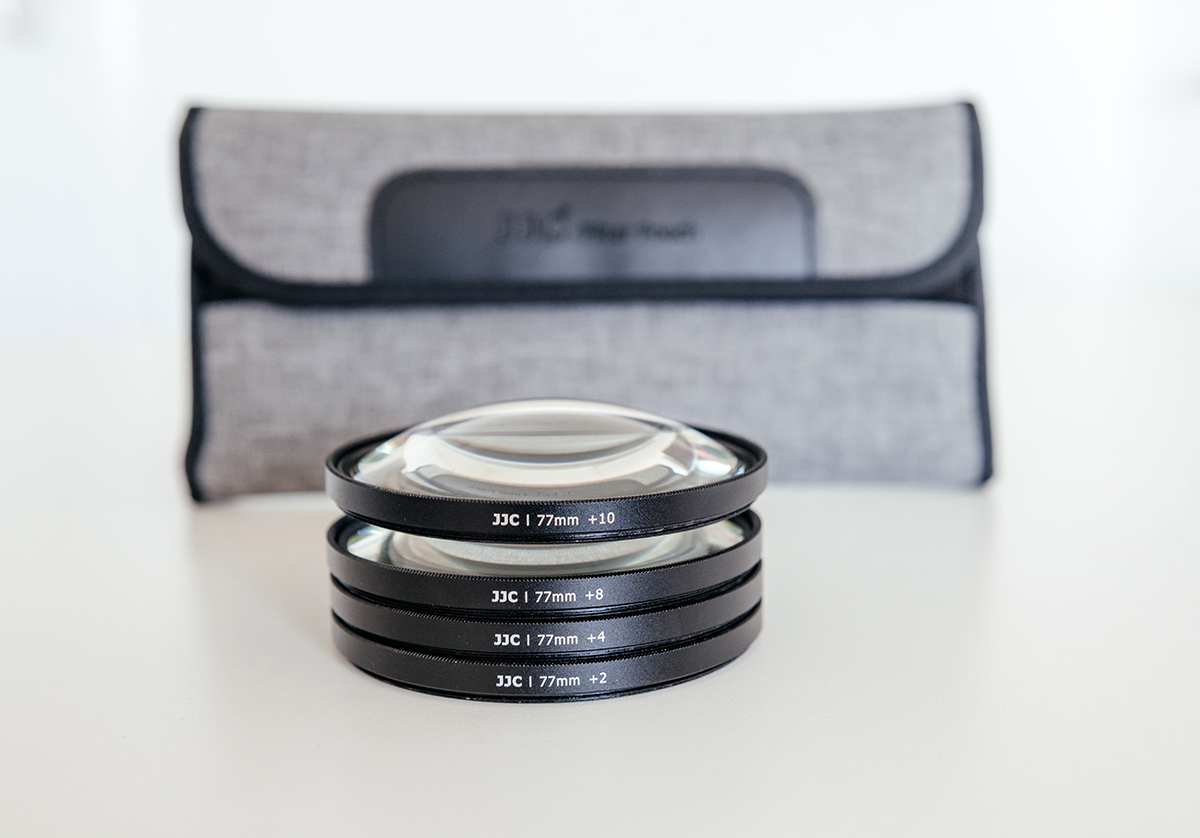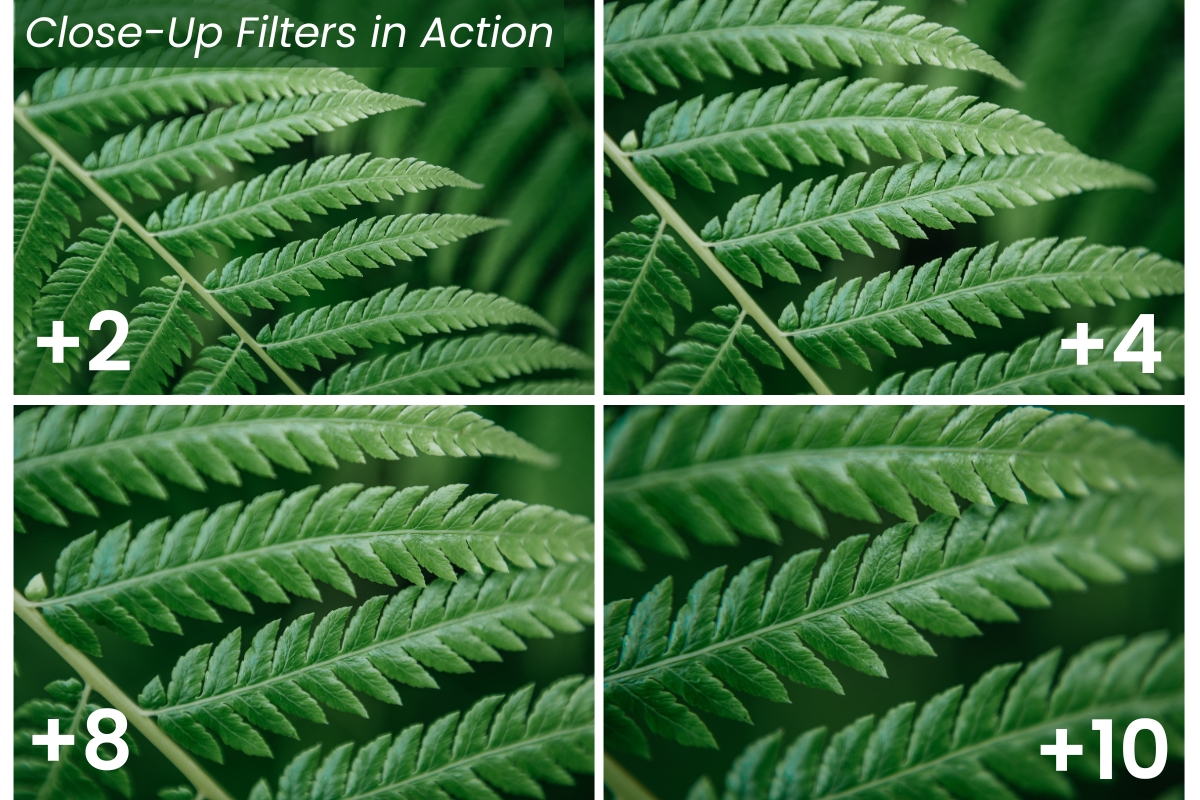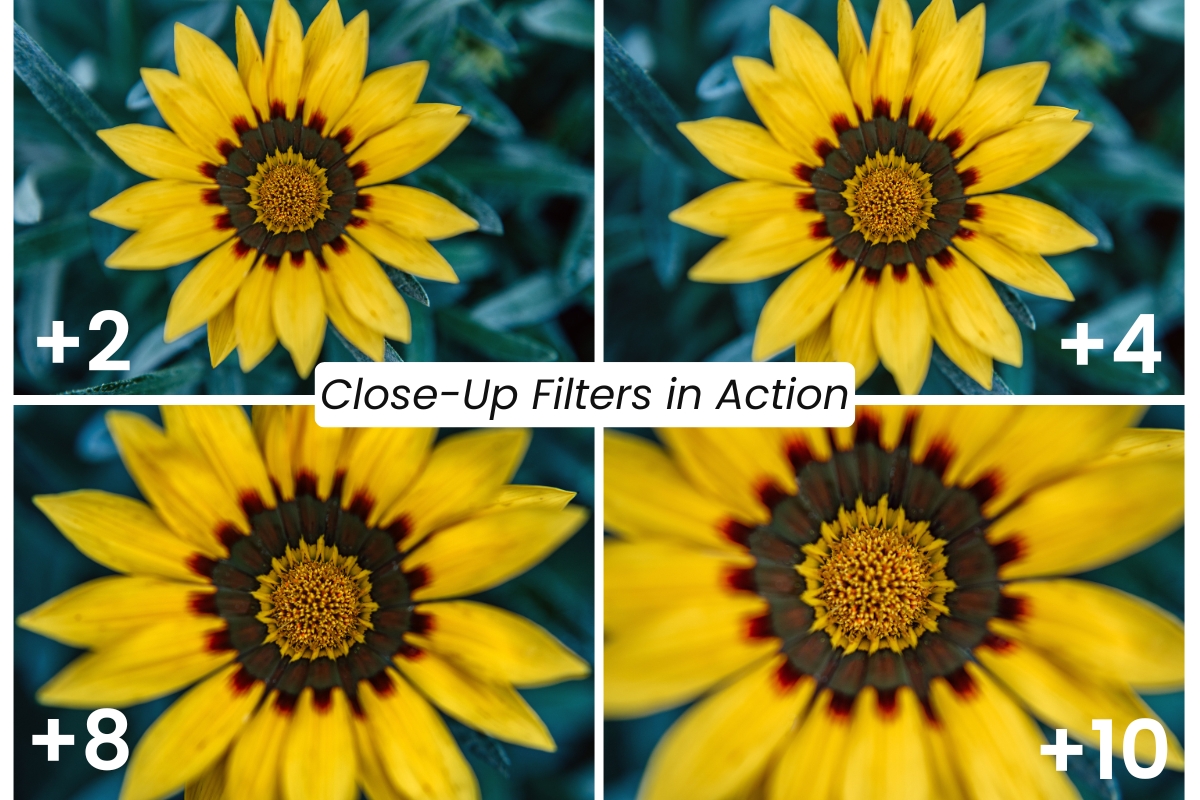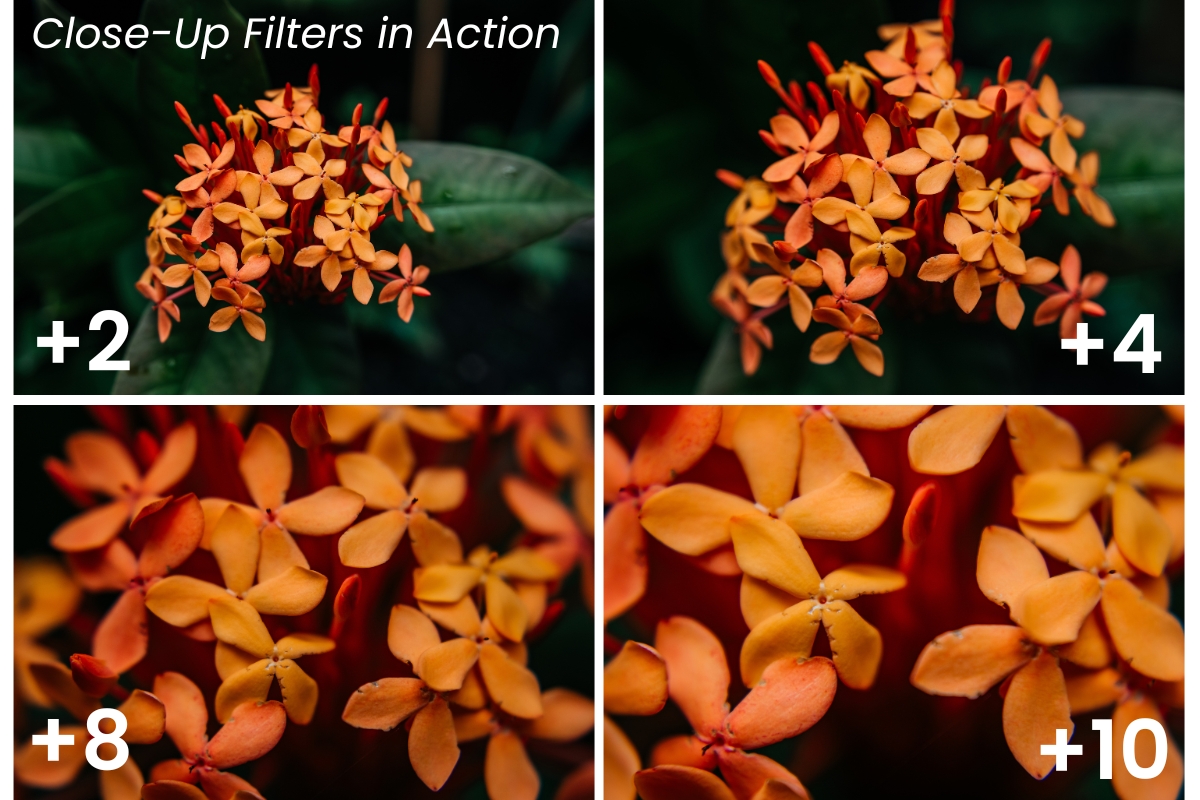Exploring Macro on a Budget with the JJC 77mm Close Up Macro Filter Kit
Macro photography often feels like stepping into another world — every flower petal, insect wing, and raindrop reveals incredible hidden detail. The challenge? A dedicated macro lens can cost several hundred pounds, which makes many beginners hesitate.

That’s why I picked up the JJC 77mm Close Up Macro Filter Kit (+2, +4, +8, +10) and tested it at the Glasgow Botanic Gardens. This affordable kit is a simple way to start exploring macro photography without breaking the bank.
What Are Close-Up Filters?
Close-up filters (also called diopters) are magnifying lenses that screw onto the front of your existing lens. They shorten the minimum focusing distance, allowing you to get closer to your subject and capture more detail.
The JJC kit includes four filters: +2, +4, +8, and +10.
- The +2 and +4 filters are great for flowers and larger details.
- The +8 and +10 filters let you capture very small subjects, like the veins of a leaf or the eye of an insect.
- You can even stack them, though sharpness usually suffers when doing so, and many stronger filters not designed to be stacked at all.
My Experience with the JJC 77mm Kit

At just around £28 / $35, the JJC set includes four glass filters in sturdy aluminum frames plus a protective pouch. The build feels solid, and the double-thread design makes stacking easy.
During my sessions in the Botanic Gardens:
- The +2 and +4 filters gave pleasing results with good sharpness, especially when paired with longer focal lengths.
- The +8 and +10 filters revealed fascinating details but also introduced some softness at the edges and a bit of chromatic aberration (purple/blue fringing in high-contrast areas).
- Autofocus still worked, though I often switched to manual focus for precision.
For social media sharing and small prints, the images looked great — far beyond what my regular lenses could achieve on their own.

Close-Up Filters in Action
This example shows how close-up filters change what you see through the lens. Using the same yellow flower as a subject, each filter strength brings you closer:
- +2 filter – a gentle magnification, great for photographing flowers or larger details.
- +4 filter – fills the frame with more of the subject, perfect for tighter compositions.
- +8 filter – reveals fine structures in the flower’s center.
- +10 filter – extreme close-up, showing textures and details invisible to the naked eye.
As the strength increases, the focus range gets narrower and sharpness at the edges can decrease, but the creative results are exciting for any beginner exploring macro photography.

Pros and Cons of Close-Up Filters
Pros:
- Affordable (far cheaper than a macro lens).
- Easy to use — screw on and shoot.
- Small and portable.
- Autofocus and aperture control remain functional.
Cons:
- Some image quality loss at higher diopters.
- Very shallow depth of field.
- Narrow focus range — you lose infinity focus while the filter is on.
Other Alternatives for Macro Photography
Close-up filters aren’t the only way into macro photography. Two other popular options are extension tubes and dedicated macro lenses. Each has its own strengths and drawbacks.
Extension Tubes
- What they are: Hollow spacers that sit between your lens and camera body.
- Pros: No glass, so image quality is preserved. Affordable and effective.
- Cons: Reduce the amount of light, require removing the lens to attach, and limit focus range.
Extension tubes are another solid budget option, not necessarily “better” or “worse” than close-up filters — just different. If you’d like a full side-by-side comparison, check out this post: Close-Up Filters vs Extension Tubes
Dedicated Macro Lenses
- What they are: Lenses designed for close focusing, often up to 1:1 magnification.
- Pros: Deliver the best sharpness, contrast, and flexibility. Can be used both for macro and general photography.
- Cons: Expensive — usually £300–£1000+.
If you’re curious about affordable options in this category, I’ve rounded up some of the best value choices here: Best Budget Macro Lenses 2025
In short: Close-up filters are the easiest entry point, extension tubes are another budget-friendly choice with their own pros and cons, and macro lenses are the premium solution once you know you’re serious about macro.
better budget upgrade, and macro lenses are the top choice if you get serious.
Final Thoughts: Is the JJC Filter Kit Worth It?
As one reviewer put it, “you won’t get the kind of results you’d get from an expensive macro lens, but you shouldn’t expect to… The optical quality… isn’t quite up there with other filters, but they’re good for the price.” That’s exactly the point: the JJC kit isn’t meant to rival a £500+ macro lens, but it opens the door to close-up photography for a fraction of the cost.

Bottom Line on the JJC Kit: The JJC 77mm Close-Up Filter set is an affordable, lightweight, and fun way for beginners to explore macro photography. With four strengths (+2, +4, +8, +10), it offers plenty of variety to experiment with, and while you’ll notice some softness and fringing at higher powers, the creative possibilities far outweigh the compromises.